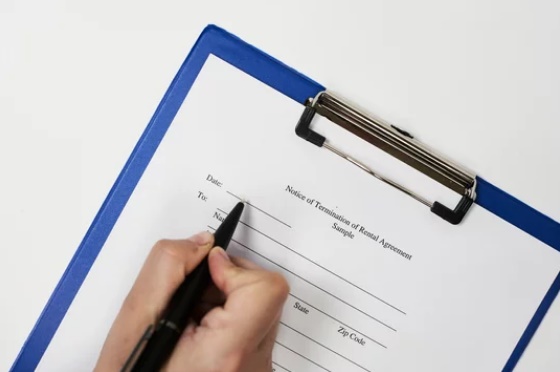Landlords are familiar with the regular drill of leasing their property and terminating the lease. There can be many situations when terminating the lease is inevitable. You may have to renovate the property, or the tenant may not be following the lease terms.
Whatever the reason is, the landlord can send the termination letter to the tenant when needed. A timely sent lease termination letter can ensure a good relationship with the tenant after lease closure.
In this article, we explain how to do it and what things you need to take care of.
Contents
What is a lease termination letter?

It is a notice used for the early ending of the lease or for confirming the end of the expiring month-to-month tenancy.
To end the landlord-tenant relationship, the landlord releases a lease termination letter. For example, if a 6-month agreement will be renewed after 6 months, you have to send a lease termination letter to end the agreement.
The advanced notice gives the tenant the required time to find another home without any hassle or inconvenience.
Why does the landlord need it?
In many states, the landlord has the right to terminate a month-to-month tenancy by sending a 30-day notice for a tenant who lived less than a year.
If the tenant lived for more than a year, the landlord should send him a notice of 60 days. This rule does not apply to the house under sales contract or in escrow. The agreement finishes when both the parties agree.
It is better if you give the notice at the start of the month, but you can also send a notice in mid-month. However, according to state laws, you have to give a full month to let the tenant prepare for moving out. This will add additional days along with 30 days until the tenant would leave.
Valid reasons for sending a lease termination letter to a tenant
The landlord can terminate the agreement in the following conditions:
- If the tenant fails to pay the rent.
- If the tenant violates the lease terms.
- If the tenant has violated a responsibility obligated by law.
In the lease termination letter, the landlord may ask the tenant to fulfill the following conditions.
- Pay the rent or vacate the house: The tenant must pay rent within 4-5 days of notice or should evict the property.
- Correct the violation or quit: Tenant must correct the breach within a given time or move out of the home.
- Vacate the house without any opportunity: The tenant must vacate the house without being allowed to pay the rent or correct the violation.
➡LEARN MORE: Useful Questions for Tenant Referencing
Write a lease termination letter
For a lease termination letter, the following information should be filled in correctly.
- Name of the landlord.
- Name of tenant.
- Start date, end date, and name of the original lease agreement.
- Vacate date for the tenant.
- A valid reason for lease termination.
What to do after sending a lease termination letter?
After giving a 30-day notice to your tenant, you have to wait for his answer. Until his response, you cannot compel him to leave the house. If the tenant wants to prolong the tenancy period and decides to challenge the notice, you have to go for an eviction lawsuit.
If the tenant cures the violation or pays the rent, you can ignore the notice and continue working the same way. Always keep all the documents and notices safe as you may have to show them in court in unfavorable circumstances.
What if the tenant refuses to vacate?
After the lease termination letter, if the tenant refuses to vacate the house, the landlord can file an eviction lawsuit. It permits the landlord to clear the house by physically removing the tenant and his belongings with a law enforcement officer’s help.
Writer and content creator interested in Entrepreneurship, Marketing, Jobs and landlord issues. I have a bachelor’s degree in Communication from the Andrés Bello Catholic University, VE, and I also studied at Chatham University, USA. In this blog I write and collect information of interest around agreements, property and mortgage.